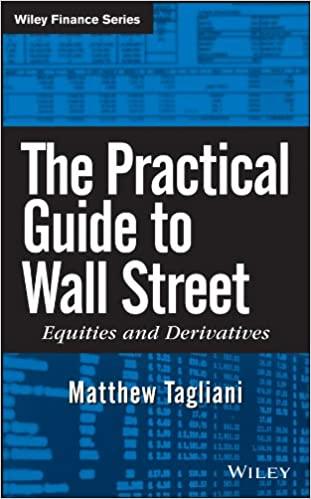Question
Assume you are considering investing $10,000 in a T-bill that pays 0.06 and a risky portfolio, P, constructed with 2 risky securities, X and Y.
Assume you are considering investing $10,000 in a T-bill that pays 0.06 and a risky portfolio, P, constructed with 2 risky securities, X and Y. The weights of X and Y in P are 0.70 and 0.30, respectively. X has an expected rate of return of 0.16 and standard deviation of 0.02, and Y has an expected rate of return of 0.12 and a standard deviation of 0.009. X and Y have a covariance of zero (0). You have an utility function of the form: U(R)=E(R)-A/2 sigma square . A. What would be the dollar value of your positions in X, Y, and the T-bills, respectively, if you decide to hold a portfolio that has an expected outcome of $11480? B. Assume that the portfolio formed initially (based on your answer in A, i.e. an expected value of 11480) is your optimal complete portfolio, what should be your risk aversion coefficient? C. Assume that you can invest in another risky portfolio Q composed of 50% of X and 50% of Y. You can also invest in T-bills. What should be the proportions of X and Y in the optimal complete portfolio on the new C.A.L (formed with portfolio Q). D. Compute the loss or gain in utility between your initial situation (portfolio formed in B) and the new situation (portfolio formed in C)? provide an explanation.
Step by Step Solution
There are 3 Steps involved in it
Step: 1

Get Instant Access to Expert-Tailored Solutions
See step-by-step solutions with expert insights and AI powered tools for academic success
Step: 2

Step: 3

Ace Your Homework with AI
Get the answers you need in no time with our AI-driven, step-by-step assistance
Get Started


